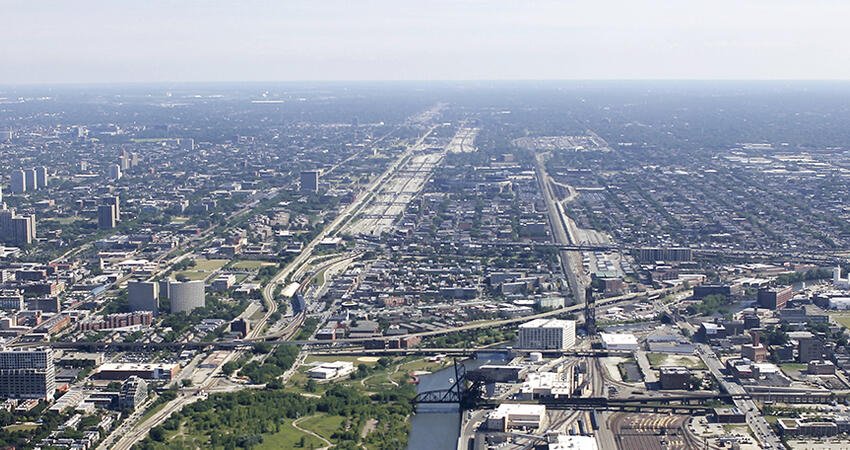
What Are the Costs of Segregation?
by Mark Treskon
Segregation is associated with many negative effects. It concentrates social, economic, and environmental resources and hazards, and it harms people living in distressed and isolated neighborhoods. Regions with high degrees of segregation stratify access to education and other public services, opportunities for social interaction, and labor market prospects.
But what are the costs of segregation on metropolitan regions? How does segregation diminish economic vibrancy in a region and its residents’ earnings potential?
More inclusive, or less segregated, regions have higher average incomes and educational attainment and lower homicide rates. The Urban Institute’s new report, The Cost of Segregation: National Trends and the Case of Chicago, 1990–2010, finds that building more inclusive regions can deliver dividends that come through providing greater access to opportunity:
- More economically inclusive regions have higher black per capita and black median household income.
- More racially inclusive regions with lower levels of black-white segregation have higher black median household income, higher bachelor’s degree attainment for both blacks and whites, and lower homicide rates.
- Regions with lower levels of Latino-white segregation have higher overall life expectancy.
How segregated are we today?
Trends in segregation have varied over time. Economic segregation fell in the 1990s but increased in the 2000s, and Latino-white segregation increased in both the 1990s and the 2000s. Black-white segregation declined over this period, but blacks and whites are more segregated from one another than Latinos and whites.
Many US metropolitan areas remain highly segregated by both income and race (the interactive below compares 2010 segregation levels and rankings for the 100 most-populous commuting zones, or CZs).
Although regions with high levels of one form of segregation tend to have high levels of another form, segregation varies across the country. New York City has the highest level of economic segregation, but is 20th in black-white segregation and 11th in Latino-white segregation. Milwaukee, Wisconsin, has the highest level of black-white segregation and the second-highest level of Latino-white segregation, but ranks 35th in economic segregation. Finally, Reading, Pennsylvania, has the highest level of Latino-white segregation, but ranks 42nd in black-white segregation and 81st in economic segregation.
Communities could reap dividends by working toward inclusion
If decisionmakers in the Chicago region reduced its level of racial and economic segregation to the median level, we estimate that black per capita income would go up 2.7 percent (or $527). If black-white segregation dropped to the median, we estimate the following:
- Black per capita income would increase 12.4 percent (or $2,455).
- The educational attainment rate for black and white residents would increase, with approximately 83,000 more adults completing a bachelor’s degree. Of these graduates, 78 percent would be white and 22 percent would be black.
- The homicide rate would be 4.6 (instead of 6.6) per 100,000 people (as of 2010). In actual numbers, that decrease in segregation would have reduced the number of homicides in Chicago in 2010 from 553 down to 386, a decrease of 167.
These findings are additive. If the economic and the black-white segregation measures were the median amount, the associated increase in black per capita income would be 15.1 percent, or $2,982, making for an aggregate increase of $4.4 billion in black per capita income for residents in the region. The Urban Institute’s partners at the Metropolitan Planning Council have produced a companion report on these findings.
If actors at the city, county, and state levels could break down barriers to local inclusion, entire regions could benefit from higher incomes and education levels and fewer homicides. The Urban Institute’s ongoing work with the Metropolitan Planning Council will continue to investigate how policy levers could address these issues and accelerate progress toward more inclusive, prosperous communities.
Register for the Urban Institute event Racial and Economic Segregation in US Metro Regions: What Does It Cost in Lives, Income, and Human Potential? or watch the livestream on Friday, July 14, at 9:30 a.m. ET.
This post was originally published on Urban Wire, the blog for the Urban Institute.